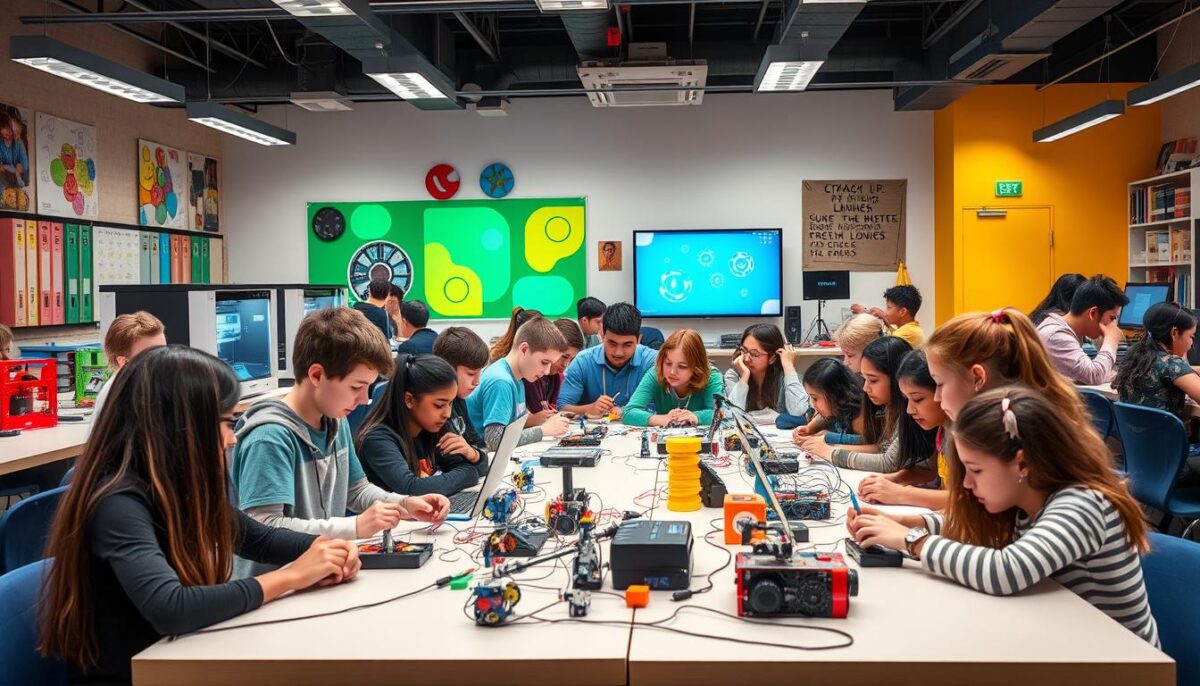The rapid evolution of technology necessitates a transformative approach to education, urging the creation of a cohesive tech education strategy. As we witness a growing reliance on digital tools, the establishment of a robust technology education policy is critical. Current educational systems exhibit significant disparities in resources and curriculum, often leaving students ill-equipped for a competitive global job market. Recent studies highlight alarming gaps in access to technology and emphasize the urgent need for digital education reform. By adopting a well-structured technology education policy, we can ensure that students across all backgrounds receive equitable opportunities to thrive in a tech-driven world.
The Importance of Technology Education in Modern Curriculum
The integration of technology into modern curricula carries immense significance. As society evolves, the purpose of technology in schools becomes increasingly clear. Educators and policymakers widely recognize the tech education relevance in equipping students with essential skills needed in today’s world. A comprehensive technology education promotes not only digital literacy education but also critical thinking and problem-solving abilities.
Why Tech Education Matters
The role of tech education is vital for preparing students for a technology-driven world. Research shows that mastering technological tools enhances student engagement and fosters a culture of innovation. Traditional education methodologies benefit immensely from the positive impacts of tech integration, making learning more interactive and collaborative.
Benefits of Integrating Tech into Education
Integrating technology in educational settings leads to numerous benefits. Studies from leading organizations have documented substantial improvements in learning outcomes when technology is effectively applied. Educational technology advantages include tailored educational experiences that cater to diverse learning styles, resulting in improved academic performance. Below is a table illustrating these benefits:
| Benefits | Impact on Students |
|---|---|
| Enhanced Engagement | Increased motivation and participation in learning activities |
| Collaborative Learning | Encouragement of teamwork through technology-based projects |
| Differentiated Instruction | Tailoring lessons to fit individual learning needs and preferences |
| Critical Thinking Development | Improved problem-solving skills through technology-driven tasks |
Preparing Students for a Digital Future
As we look forward, preparing students for future skills is crucial. The digital landscape demands competencies that are often absent from traditional curricula. Educational initiatives should focus on fostering adaptability and creativity among students. Institutions must embrace educational technology advantages to ensure students emerge as competent and confident individuals ready to take on technology-centric careers.
Challenges Facing Technology Education Today
The evolving landscape of technology education encounters significant hurdles that hinder its effective implementation. One major issue is the lack of resources and funding, which creates resource disparities across school districts, particularly affecting underprivileged areas. Additionally, the necessity for teacher training and professional development presents another formidable challenge. Understanding these obstacles is crucial for developing effective tech education programs.
Lack of Resources and Funding
Many educational institutions grapple with funding issues in tech education, resulting in educational technology funding challenges that directly impact classrooms. Reports from a variety of educational organizations reveal that resource disparities often result in significant inequity in access to technology. For instance, students in affluent areas benefit from advanced devices and software, while their peers in less fortunate regions are left behind, lacking the necessary tools for modern education.
To bridge these gaps, advocacy groups urge for increased financial support from both government and private sectors. Without this commitment, the digital divide will continue to expand, placing students in underprivileged areas at a disadvantage.
Teacher Training and Professional Development
Another pressing issue arises from inadequate teacher training in tech education. Many educators report feeling unprepared to effectively implement technology in their teaching methodologies due to insufficient opportunities for professional development. Such professional development needs are crucial for ensuring that educators can harness technology to foster rich learning experiences.
Organizations, such as the National Education Association, emphasize the importance of comprehensive educator technology training programs. Research indicates that when teachers receive adequate training, they confidently adopt innovative strategies that enhance student engagement and learning outcomes. Ongoing professional development tailored specifically to technology use in the classroom is essential for cultivating an effective tech education environment.

| Challenge | Impact | Potential Solutions |
|---|---|---|
| Lack of Resources and Funding | Limits access to technology | Advocacy for increased funding |
| Resource Disparities | Creates digital divide | Equitable distribution of resources |
| Teacher Training Needs | Educators feel unprepared | Comprehensive professional development programs |
| Educator Technology Training | Low utilization of tech | Targeted training sessions |
OPINION: Time for a Coherent Tech Ed Policy
The landscape of technology education necessitates a systematic and coherent approach. Various education leaders advocate for a cohesive tech education policy to address the inconsistencies stemming from decentralization. A unified tech education strategy would establish standardized curricula adaptable by educators, ensuring that every student gains essential technology skills, bridging gaps in current educational offerings.
The Need for a Unified Approach
The benefits of cohesive tech policies extend beyond mere uniformity in education. Collaboration among educational institutions, policymakers, and the tech industry can form a unified approach to tech education, facilitating educational policy reform. By combining resources and expertise, stakeholders can develop a robust framework for teaching technology, ultimately enhancing the quality and accessibility of tech education. This cooperative model prepares students for an ever-evolving digital landscape.
Potential Impact of a Cohesive Tech Ed Policy
Implementing an effective cohesive tech education policy carries significant implications for the future of technology education. Studies indicate that standardizing tech education can eliminate disparities in technology access, allowing all students to thrive in a digital economy. The positive impact of tech education policy reform is twofold: it enhances curriculum development reflective of industry needs while fostering partnerships between educational entities and tech companies. A generation equipped with relevant technology skills emerges, ready to meet the demands of an increasingly tech-driven world.
Strategies for Implementing a Coherent Tech Ed Policy
To establish a coherent tech education policy, actionable implementation strategies for tech policy are vital. Firstly, increasing investment in educational technology is crucial. Schools need adequate funding to purchase the latest software and hardware, which not only enhances learning outcomes but also engages students in a meaningful way. This financial commitment can come from local governments, private-sector partnerships, or dedicated grants aimed at tech education reform initiatives.
Another essential component is the development of comprehensive training programs for teachers. Educators play a pivotal role in the success of any tech education initiative; therefore, equipping them with the necessary skills through professional development workshops and ongoing training is integral. Effective educational strategies that focus on hands-on training and real-world applications will empower teachers to integrate technology effectively into their classrooms.
Fostering partnerships with tech firms is also a strategic avenue to explore. Collaborations with companies in the tech industry can provide schools access to expertise, resources, and innovative tools that enhance learning experiences. By analyzing insights from successful case studies where coherent policies have been implemented, educational leaders can adopt best practices that serve as blueprints for wider application across districts. By prioritizing these strategies, we can pave the way for a future-ready generation.



